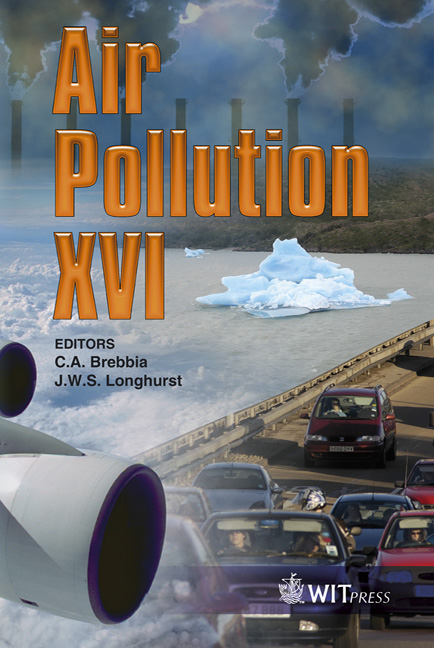Emission Inventory For Urban Transport In The Rush Hour: Application To Seville
Price
Free (open access)
Transaction
Volume
116
Pages
10
Page Range
291 - 300
Published
2008
Size
563 kb
Paper DOI
10.2495/AIR080301
Copyright
WIT Press
Author(s)
J. Racero, M. Cristina Martín, I. Eguía & F. Guerrero
Abstract
Energy and transport are indispensable ingredients for economic and social development. At the same time conventional forms of energy production, distribution and consumption as well as sustainable transport and mobility patterns are linked to environmental degradation. The goal of the work is to develop a decision support system able to help local administrators in reducing the impact of air pollution due to urban traffic. The method designed is a framework, which included a transportation planning tool and a comprehensive model to estimate pollutants emissions. The hourly traffic flow data is obtained from transportation planning, and the emission model integrated is based on COPERT methodology. Detailed traffic data have been collected and analyzed from the city of Seville to test the methodology. Keywords: CORINAIR, emission inventory, traffic assignment model, transportation planning. 1 Introduction Among the sources of air pollution, road traffic is widely recognised to be the most important and increasing source. Carbon dioxide (CO2) and water vapour (H2O) are the most significant transport emissions to the atmosphere. When combustion is incomplete, fuel is oxidised to carbon monoxide (CO) with some volatile hydrocarbons. Impurities such as sulphur are oxidised mostly to sulphur dioxide (SO2) or to sulphate during the combustion process. And finally, at high combustion temperatures, nitrogen is oxidised to nitric oxide (NO) and small quantities of nitrogen dioxide (NO2) or nitrous oxide (N2O). UNECE/EMEP [7] estimated road traffic emissions to account for about 54% of CO emissions, 47%
Keywords
CORINAIR, emission inventory, traffic assignment model, transportation planning.





